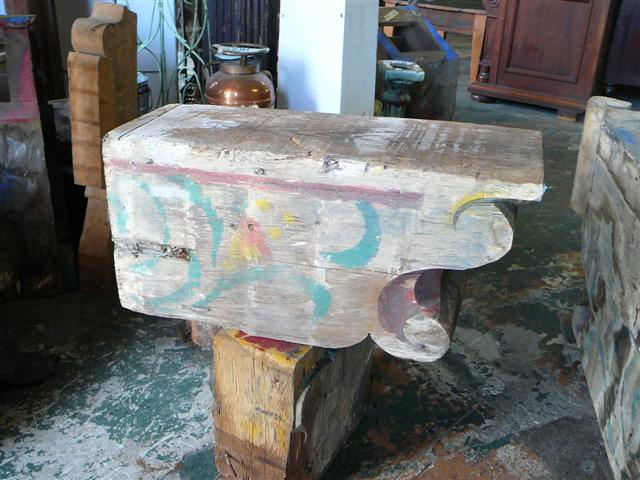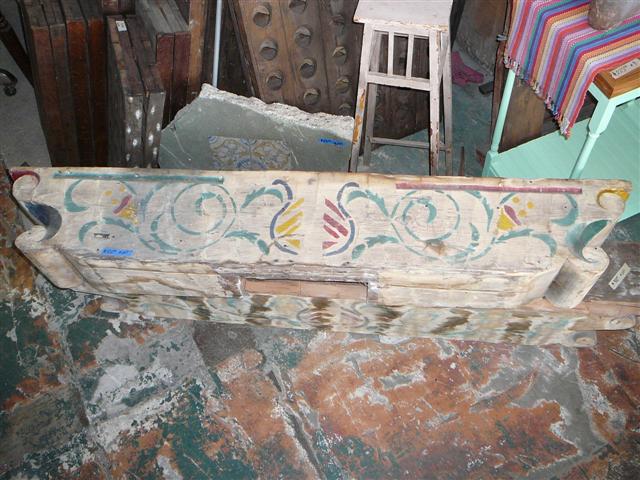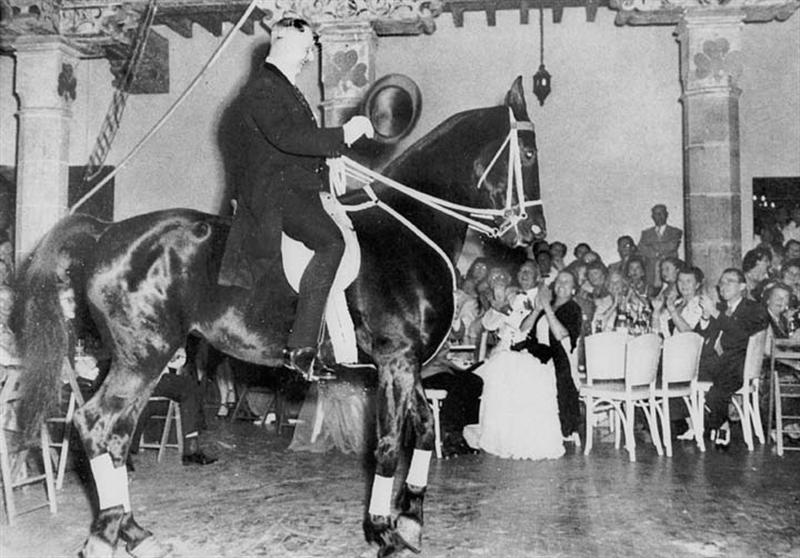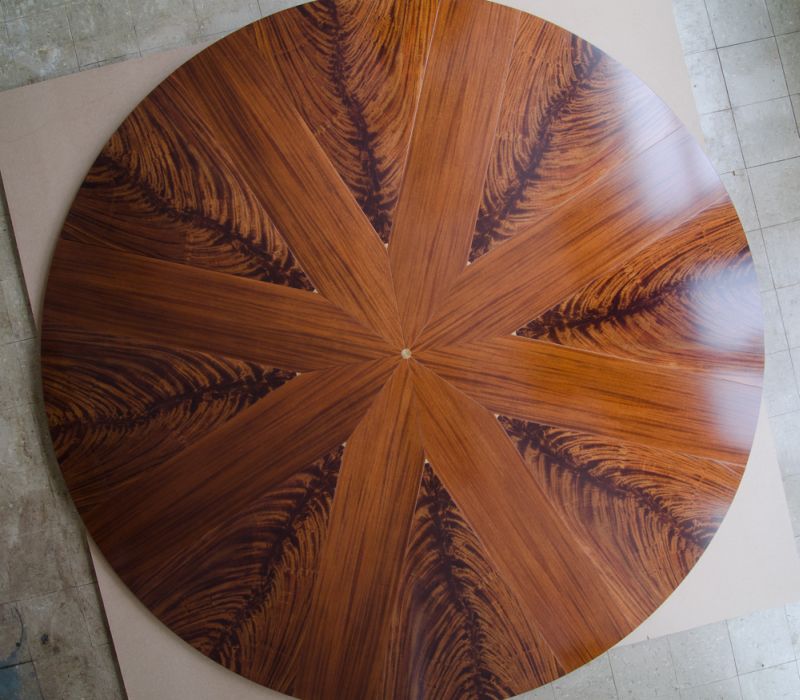Question
I have some old (1860's) wooden corbels and beams from the John Ringling Towers that I am using to fabricate a mantle. The egg tempera paint that is on the pieces now is very delicate and needs a topcoat to protect it. What type of topcoat material would be compatible with this paint? I plan on doing some test samples but want to hear from others first.


Forum Responses
(Finishing Forum)
From contributor K:
I'm not sure the best finish (SealCoat Shellac perhaps with a top coat over that) but anything you put over it is going to change the colors and depth considerably.
By "delicate" I mean that if the beams were left unfinished the egg tempera paint will easily rub off when its touched. 150 year old paint is delicate no matter what type of material it is but even more so because it is egg tempra. This piece will become a mantle and it will see a lot of touching and traffic so I want to make the finish durable enough to last another 150.
It's not really a big deal whether or not the paint is tempera except that it would be really unusual if it was and there would have to be some interesting story behind it (maybe not that interesting). The only way to know for sure is to perform a lab test using either gas chromatography or high-performance liquid chromatography. If the binder had been verified as tempura by either of these methods you should have received the testing certificate from the lab that performed the test.
So the dates you were given for the building are wrong, the type of paint used is questionable (in my mind at least), and pictures of the building interior show some similar corbels, but not quite the same from what I've seen. Here are a couple images.


So applying the clear coat by spraying seems the best approach since brushing would probably cause more damage. And you'll want to choose a finish that has the least amount of interaction with the paint itself. That last part is where it gets more important to know what the binder is in the paint you're sealing so you can minimize the interaction. You want to avoid dissolving the paint, or even making it swell and detach from the wood, wrinkle, or crater the clear coat. If you have an area of paint that's in good shape, give it the solvent test to get a better idea of what the binder is.
Second, if assuming it has not been cleaned, recently or ever, then do you really want to encase the dirt with an overcoat without cleaning first?
Third, each and every one of the pigments used could respond differently to anything you use. Lead white for instance has a lesser degree of swelling associated with cleaning solutions or resin/solvent solutions. Some pigments may be more fugitive during a cleaning, some pigments can react with certain chemistry and change color drastically and permanently, and I'm not referring to a deeper color due to saturation as often happens when clear coating over colors. Even binders which were originally water soluble can change and become somewhat cross linked. Binders that were not originally water soluble can become water soluble if any previous cleaning chemistry, most especially alkalines residue, were left behind.
As Paul said it is unlikely any Gas Mass or lab tests were done to determine the binders or pigments, so low tech solvent tests are required to help you find all the parameters you are dealing with. Remember that what works or doesn't in one location may not be the same result in others. You have to test everything. Keep very detailed notes as you run your tests, memory alone will get lost when you try to zero in on the final answers.
Depending on all the answers you do come up with, will determine what you do from there. I would not recommend in any case that a lacquer be used. Probably not shellac either. A possibility would be B-72. It is a very stable resin which is soluble in many different solvents, acetone, ethanol, xylene, etc., which provides a lot of options if one of those solvents does not affect the original. It is then also removable if ever needed, in that same solvent without harming the original. You might also be able to use something like Regalrez, if the original is not affected by mineral spirits/naptha. If spraying an overcoat you may need to use very low, just misting, air atomization at first to lock the pigments down without knocking them out of place because it sounds like there may be areas that are just holding on by memory at this point. No matter what you do you can anticipate that you may lose some during your treatments. If you overcoat you have to keep in mind what temperatures these are potentially going to be exposed to once they become a mantle.
If reversability of the clear coat is not that critical, then reparability is a key factor I would want to consider. Shellac, lacquer, and some waterborne finishes are easily repaired should the future need arise. In either case, reversibility or reparability, the key is to make sure the solvent for the finish doesn't adversely affect the existing paint, whatever the binder.
Aerosol cans work just fine. They cost quite a bit more than using spray equipment, but will produce results that are just as good. I'd apply only as many coats as it takes to achieve a uniform sheen. I'd expect to apply 2-3 coats.
Itís better to make your own from the 100% solids pellet form using one of the many solvents it is soluble in, once you determine what solvent won't harm the original. It has been found to be very stable and will not yellow like other resins. Reversibility is not always technically desirable or feasible, so retreatability is important.
The problem with nitrocellulose lacquers is that they self destruct. No one has yet found a way to permanently save them. The etherification process begins shortly after curing takes place, and while you may not be able to see it by eye, microscopic cracking of the coating begins to take place in a relatively short period of time. Relatively is a key word here, as for an artifact of historic significance the idea is to not have to treat it again for a very long time, as the original poster was hoping for. Since these items are about to become something other than their original form, I'm not too sure that there is a lot of concern for its historic heritage anyway.
What seems to be the only concern is to protect the decorative nature. Shellac is a wonderful coating that can maintain some rather long term stability, if it is custom made with a high quality grade, and it is retreatable (even reversible if ethanol doesn't harm the original), but it too can and does crosslink if exposed to high temperatures or enough UV light damage. There is no right answer that can be determined until solvent tests are carried out. That goes for both cleaning and/or coating of the items.
Because it cannot be allowed to mix with other colors already on the board, it is up to the iconographer to work painstakingly on every detail until it is fully completed. It is a perfect medium for demanding detailed work, but it requires far more patience and time than any of the ready-made mediums.
This is most obvious when working on the faces and skin: rather than applying different shades of the skin tone at the same time and merging them on the canvas to form facial features, egg tempera requires layered application, from dark to light. Each layer should be lighter than previous, very thin (dry brush technique) and applied only on top of completely dry layers. Furthermore, visible brush strokes, however intriguing and encouraged in secular art, are considered a poor execution on behalf of an iconographer and are not the proper way to paint holy personages - everything has to be perfectly silky and smooth, like the image was only highlighted and made visible, not painted.
Since the iconographer is only in service to the Holy Spirit, his hand should not dominate the image or be visible, either. Forming faces with egg tempera can sometimes take weeks, but the results are well worth the effort. Egg tempera is more durable than mass-produced mediums
Egg is not only a natural binder, it also has inimitable brilliance and transparency and calcifies when dry, so the surfaces painted with egg tempera are more durable than any other modern medium. There are numerous examples of durability and quality of egg tempera paintings throughout: while many oil paintings of the Old Masters are peeling and cracking and need to be carefully restored few hundred years later, icons painted with egg tempera are surviving for over six and seven centuries. More than that, when varnish is taken off some of the very old icons, colors underneath are still fresh and preserved as if painted just few days ago. For panel icons, no other medium can compare to or replace well applied egg tempera. Thatís why I'm not sure itís egg tempera.
Unfortunately the client is dragging their feet on the purchase of the corbels and I can no longer keep a hold on them. If another person purchases these items (there have been offers) then the project will dissolve.
